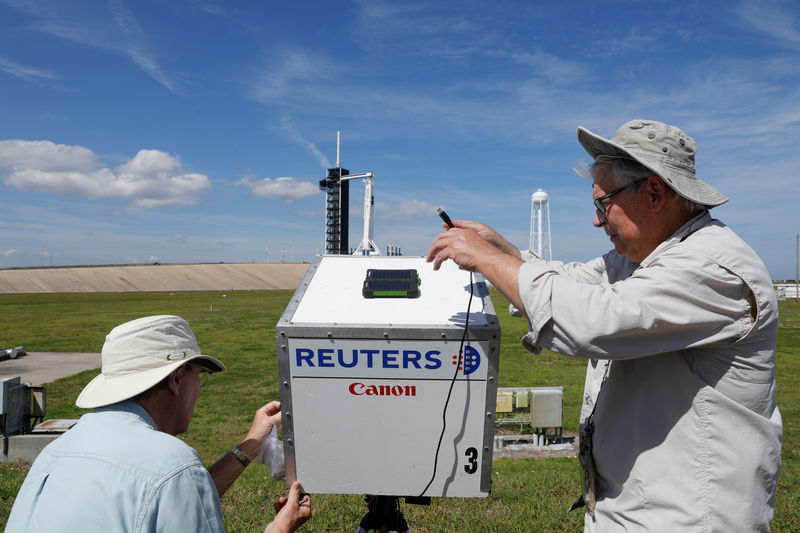(Reuters) - “It’s a challenge to describe that noise,” says Reuters senior photographer Mike Blake, after witnessing his first rocket launch.
“It’s a sound of rippling energy. Reverberating, cracking. It’s something that stays with you.”
Blake worked with Joe Skipper, a veteran of more than 200 launches, to produce Reuters visual coverage of SpaceX out of Kennedy Space Center in Florida in March.
Apart from the visual thrill of a launch, readers want to know as much as possible about Elon Musk’s SpaceX, which resupplies the International Space Station and ultimately aims to put people on other planets.
Providing images is key to capturing the drama of a launch and whether it is successful, with hundreds of millions of dollars at stake.
See some recent Reuters space launch photographs and the story behind them : https://tmsnrt.rs/2VDgump
The next launch of the SpaceX Falcon 9 is scheduled for Friday, May 3. The day before a launch slated for coverage, Skipper will assemble three or more freelance and staff photographers to set up 10 automatic cameras and associated gear on the perimeter of the launchpad.
NASA, which has run the Kennedy Space Center from Apollo missions in the late 1960s through the Space Shuttle era, takes photographers to a few select spots nearby where they can set up remote cameras with a view of the rocket, which is as tall as a 23-story building.
The cameras are housed in boxes to protect them from the elements as they have to stand at the ready for eight hours or more, exposed to potentially drastic temperature and weather changes.
Inside the boxes, small electric fans blow on the camera lenses to prevent dew forming, which could result in blurry images. The Reuters crew adjusts focus, exposure, tests the automatic triggers and secures the tripods to the ground.
The cameras are connected to sound sensors and take shots automatically when something loud occurs, like a rocket with 1.7 million pounds of thrust launching nearby.
"Setting up cameras with triggers is not rocket science itself but having them sit there for up to 24 hours and keeping moisture off them and not having batteries fail is a little more complicated," says Blake.
The media area to observe launches is about 3 miles (4.8 km) away. After setting up the remote cameras, photographers disperse to take up positions to get longer-range images.
The top of NASA’s Vehicle Assembly Building gives a direct view of the launchpad across the low-lying wetlands. Another photographer will stand on top of the Reuters building in the media site.
The combination of close-up and long-range viewpoints is designed to produce a variety of shots.
“We’re there close-up in case something happens,” says Skipper.
At the same time, it is important to capture the bigger picture. One Reuters shot of the launch in March, used by media outlets worldwide, showed the boosters returning to land from the vantage point of a beach, as birds fly past and a crowd of people watch, giving a wider perspective to the event.
“That’s the one we wanted to do,” says Skipper, who researched locations from a previous launch and instructed one of his photographers to take up his position on the beach. Another Reuters shot from 2000 showed surfers watching the shuttle going up.
“That shows something a little different from what people think is going on,” says Skipper.
